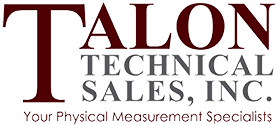S. Himmelstein Torque Measurement Accuracy vs Torque Sensor Specs
Published by Holly Hamric – February 13, 2019
Categories:
By definition, Measurement Accuracy is the degree to which a measurement conforms to the actual torque value. Using the maker's specification to predict measurement accuracy is only valid when the test conditions and the calibration conditions are identical. If they are not, field results will fall short of published Cal Laboratory performance.
Himmelstein Torque Sensors undergo NVLAP Accredited (Lab Code 200487-1) Calibrations conforming to ISO/IEC 17025:2005. Here are some of the conditions that exist during calibration.

- The laboratory is held at a constant temperature
- No significant temperature gradients exist in the test item
- No significant temperature gradients exist in the calibration stand or connecting shafts
- No significant extraneous loads are applied to the test item
- The test item and all instrumentation are thorougly warmed up before calibration
- Applied calibration loads are static and precisely known
- Transient torque effects are damped and allowed to decay before recording data
In real world testing it's virtually impossible to replicate these and other laboratory conditions. Matters are exacerbated during rotating torque measurements. During rotation there are power producing and power absorbing elements in the drive train. Because they have losses, they generate heat which causes the temperature to rise, and more importantly, causes temperature gradients. Power producers and absorbers have poles, pistons, gears, etc. that generate periodic torque variations which, in turn, can excite torsional resonances (more info). Because of these factors as well as the practical inability to minimize field misalignments and extraneous loads and to provide adequate stabilization, field test conditions never duplicate those in the calibration laboratory.

As a result, it's not possible to specify the accuracy of field measurements. No responsible, knowledgeable sensor manufacturer does. What is done is to provide, and guarantee, sensor response under stated, relevant conditions. Those specifications then permit a user to compare the performance of different products.
To satisfy accuracy requirements and account for unknown test conditions, there is a growning consensus to use a sensor whose Combined Error1 is 25% or less than the desired accuracy. When applied to a Himmelstein sensor, that ratio will virtually always result in meeting or exceeding the accuracy goal. The probability of meeting the accuracy goal is reduced when the ration is more than 25%.
Europeans have defined a parameter called "Accuracy Class2", a combination of 4 common specifications. However, like individual parameter specifications it's useful for comparing sensor models; it can't predict the accuracy of field measurements. Recent Himmelstein products specify " Accuracy Class", as defined in Europe, for European customers.
- Combined Error is the greatest deviation of ascending and descending calibration points (Himmelstein uses 21) from the sensors' Best Fit Line. It includes the effects of Non-Linearity, Hysteresis and Non-Return to Zero. It is expressed as a percent of full scale.
- Accuracy Class is the greatest of Combined Error, Repeatability, Zero Drift and Span Drift over 10 C. It is expressed a a percent of full scale.
